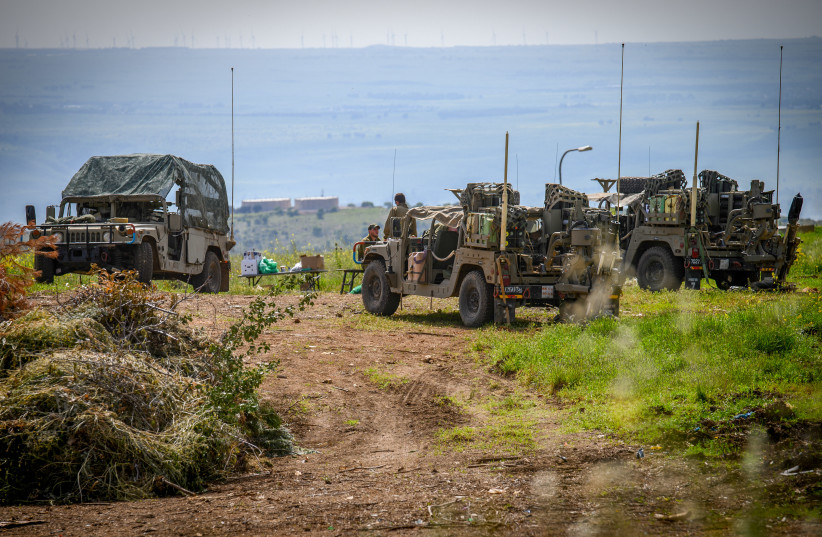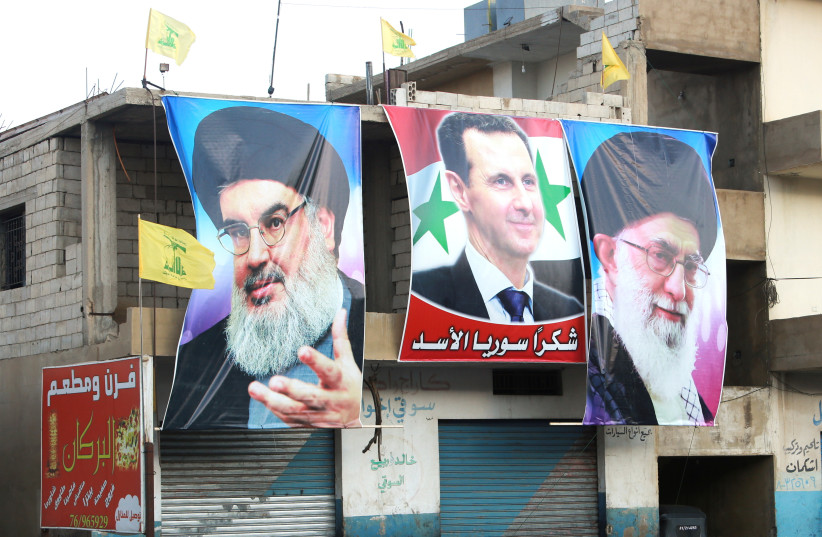The Islamic Republic’s proxies and allies appear to have begun a multi-front conflict with Israel over the past week.

A week of attacks on Israel, including rockets fired from Lebanon, Gaza and Syria, represent the manifestation of an Iranian strategy to confront Israel with multiple threats on different fronts.
Although different groups may be behind the attacks in Gaza, Lebanon and Syria, these groups are likely all linked to Iran. The groups involved include Hamas, Hezbollah, Palestinian Islamic Jihad and other groups that may go by different or new names, but which are proxies of Tehran.
Iran has long sought to bring its conflict with Israel to Israel’s borders. Its backing of Hezbollah and Hamas was key to that strategy over the decades. For instance, Iran supplies Hamas with financial support and also helped it develop a larger rocket arsenal with longer ranges for its rockets. Whereas Hamas rockets once could only travel a few kilometers, now they can reach most parts of Israel.
Iran also supported Palestinian Islamic Jihad, which is even more of an Iranian proxy than Hamas. The group not only has a rocket arsenal thought to include thousands of rockets, but it has gunmen in the West Bank and its leadership often resides in Damascus.
Hezbollah: Iran’s key ally in the multi-front war
Hezbollah is the largest of Iran’s key allies in the region.

An organization with origins in the 1980s it was backed by the new Islamic Revolutionary regime of Tehran back in the 1980s, so that it was able to build up a presence in Southern Lebanon. Hezbollah has also grown exponentially in its power since then. It not only has a rocket arsenal of more than 100,000 rockets, but it has developed more sophisticated systems, such as precision guided munitions. Along with Hamas, it also has drones that it has used to target Israel and to threaten energy exploration off the coast.
While Hamas has been mostly penned into Gaza since Israel’s withdrawal from Gaza and the Hamas victory in Palestinian elections, it now appears to be increasingly able to operate from Lebanon. The Hamas operations in Lebanon come with Hezbollah’s approval. The fact that Hamas leader Ismael Haniyeh flew to Lebanon on April 5, a day before 34 rockets were fired at Israel from Lebanon, shows how Hamas has increased its presence. Hamas cannot fire rockets or operate from southern Lebanon without coordination with Hezbollah. The rockets that were fired at Israel on April 6 were fired in broad daylight near Tyre. This is an area Hezbollah has presence. Last year Hezbollah killed a UN Irish peacekeeper in Al-Aqbieh in Lebanon north of Tyre. In May 2021 rockets were also fired at Israel from near the village of Seddiqine, also in Tyre district.
Hezbollah has increased its operations abroad in recent years. This includes Hezbollah networks that stretch to West Africa and South America. The most important development is Hezbollah’s operations in Syria, which began in 2012 in support of the Syrian regime. Hezbollah has moved forces to areas near the Golan, an area known as Hezbollah’s “Golan file” according to reports from the Alma Research and Education Center which covers threats in the north of Israel. In 2019, Hezbollah even brought drones to this area to threaten Israel. The threat was neutralized.
Other elements of Iran’s threats to Israel include militias in Syria and Iraq. These include the Iraqi-based Popular Mobilization Units and their factions such as Kataib Hezbollah and Asaib Ahl al-Haq. Iran flew a drone into Israeli airspace from Iraq in May 2021. Iran also recently launched a drone at Israel on April 1, last week, from Syria.
Iran’s idea for a multi-front war is not new. It has been boasting in recent months about how Israel is internally collapsing and it has signaled that it wants to increase its threats. Iran’s IRGC said on Sunday that this year its power will grow compared to Israel. Israel also carried out drills in May 2022 in preparation for the threat of a multi-front war. At the time estimates said Israel’s adversaries could fire 1,500 rockets a day at Israel.
Iran’s entrenchment in Syria
The multi-front war is made possible by Iran’s entrenchment in Syria. In the past Iran could threaten Israel using Hezbollah in Lebanon or PIJ in the West Bank and Gaza, and Hamas in Gaza. Israel has launched operations to neutralize the PIJ and Hamas threats in the past. Since last year Israel has also been battling PIJ gunmen in Jenin and other Palestinian factions that are emboldened against Israel. Israel has generally tried to isolate these threats, or manage these conflicts. Overall Israel has concentrated more heavily on the Iranian threat and containing Iranian entrenchment in Syria. This operation has been called the Campaign Between the Wars and it has gone on for many years, involving many airstrikes on sites in Syria. This has also involved larger operations such as Operation House of Cards in Syria in 2018. Islamic Jihad was also targeted in Syria in November 2019.
Nevertheless, the Iranian threat has not gone away and its proxies and allies appear to have begun a multi-front conflict with Israel over the past week. This involved the Iranian drone operation on April 1, Gaza rocket fire from April 5 to 7 and 34 rockets fired at Israel from Lebanon on Passover, April 6. In addition there was rocket fire from Syria on April 8 and 9. There were also shooting attacks in the West Bank and a drone launched from Gaza on April 3. When one looks at the larger picture the Iranian octopus of partners and groups is seeking to threaten Israel from multiple areas. This is also unprecedented in terms of the rocket fire from Lebanon and Syria over such a small period of time. In general peace has prevailed along the Lebanese border since 2006. Now Iran is showing it can heat up any border whenever it wants using various groups.
Content retrieved from: https://www.jpost.com/middle-east/article-738765.